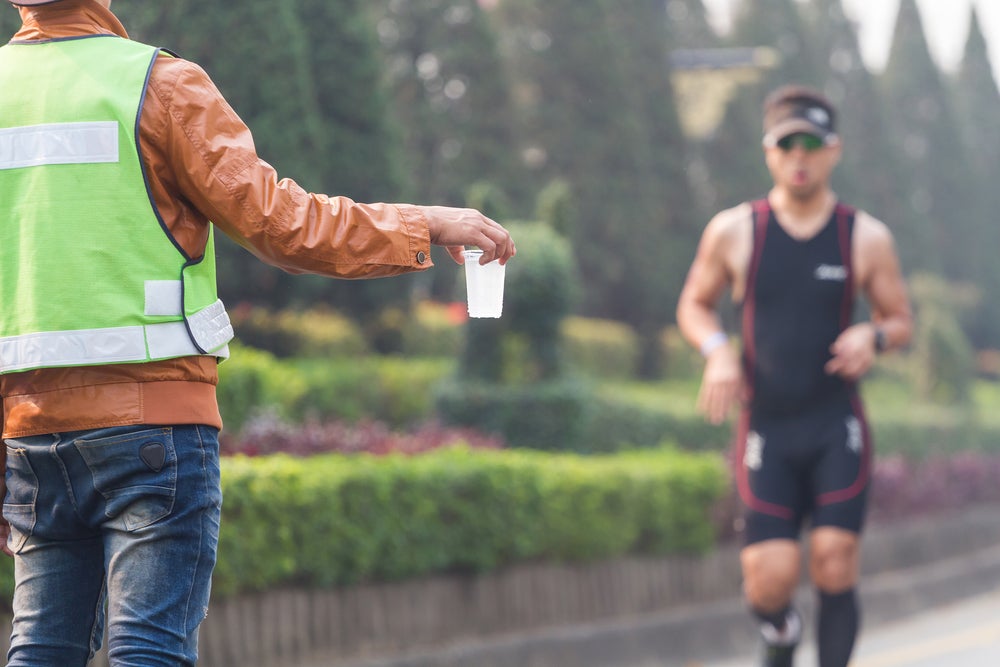Drink to Thirst or Drink on a Schedule?

Photo: Shutterstock.com
New research says one might be better than the other.
Few things are as confusing as developing a hydration plan for a race. Experts agree athletes should drink, but the advice seems to diverge from there: For every coach insisting on a set schedule for drinking, there’s three more who assert hydration should be an organic process based on thirst. So who’s right? According to new research published in the journal Medicine & Science in Sports & Exercise, it’s the schedulers.
“Data from as early as the 1940s has indicated that athletes rarely drink enough to replace as much as 75% of what they lose by sweating,” says Dr. Stavros Kavouras, director of the Hydration Science Lab at the University of Arkansas. “However, some scientists are suggesting that the best way to hydrate is to drink only when you are thirsty.”
To determine if “drink-to-thirst” really was the best way, Kavouras and his team tested a group of 10 elite endurance cyclists in 10K efforts combining hill cycling and all-out efforts in the heat. After an initial test without hydration (to establish individual fluid losses) the researchers calculated how much water each cyclist would need to drink to replace fluid losses. After a rest period, the cyclists raced again, this time drinking a prescribed amount of water every kilometer; on the third and final test, they were told to drink “ad libitum,” or as much as they wished.
During the tests, researchers recorded the speed of the cyclists; immediately following, temperature measurements were taken, along with body weight to account for fluid loss. What they found? Prescribed drinking mitigated the impact of dehydration better than drinking to thirst.
“When athletes were drinking to match their sweat loses, what we call individualized hydration protocol, they performed better, they cycled faster and they had lower body temperatures,” says Kavouras. This suggests that prescribed drinking to match fluid loss in the heat provides a performance advantage.
Is this the be-all, end-all for hydration advice? Hardly. Kavouras cautions the results can’t be extrapolated to all athletes in all situations: for one, the study focused on elite athletes, not the typical amateur, and women were excluded altogether (something Kavouras and his team plan to address in a follow-up study). There are too many variables, including environmental temperatures, acclimatization status and intensity of exercise, which can affect an individual’s hydration needs.
For athletes who want to test scheduled hydration for themselves, Kavouras suggests athletes determine their fluid needs by weighing themselves with minimal or no clothing before and after a one-hour training session at race intensity. The change in weight, plus the amount of fluid ingested during the workout, equals the athlete’s fluid loss. In other words, if an athlete loses 1 pound of weight and ingested 16 ounces of water or sport drink, then the total fluid lost is 2 pounds (16 ounces + 16 ounces = 32 ounces). To replace fluid losses during exercise, that athlete needs to drink 32 ounces of fluid per hour. If there is weight gain during the hour, the athlete is drinking more than is needed.